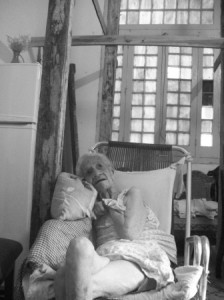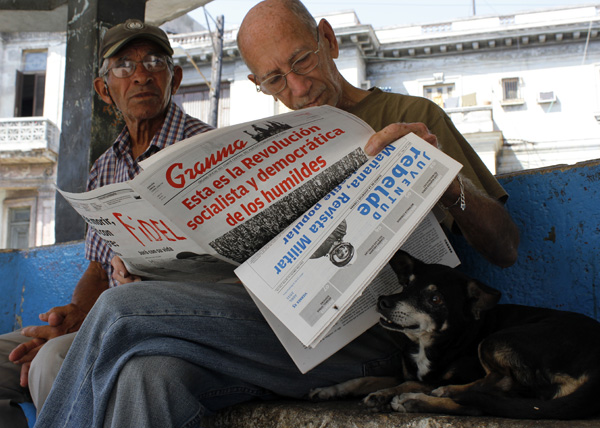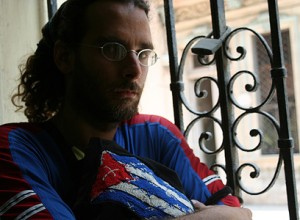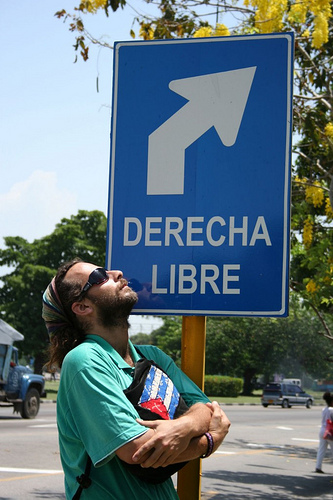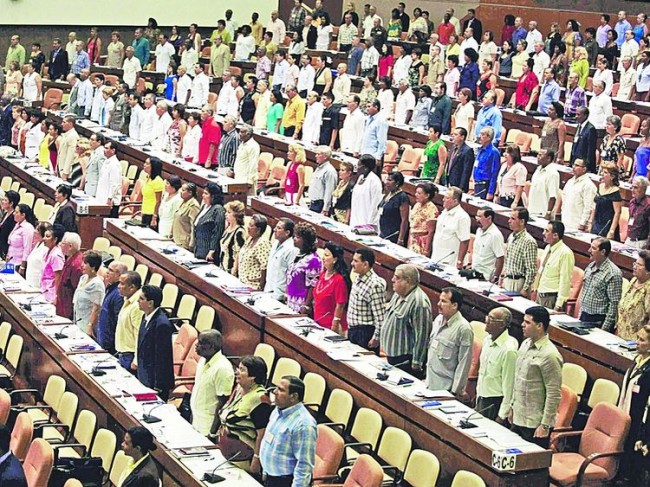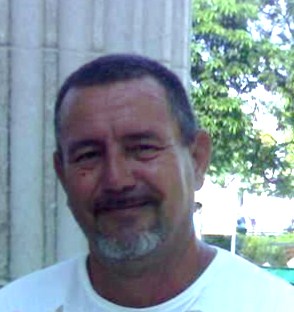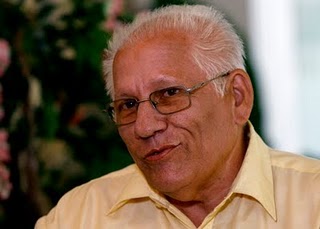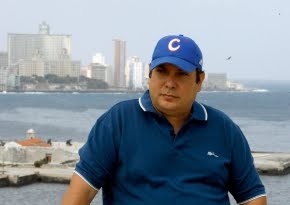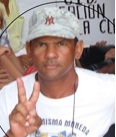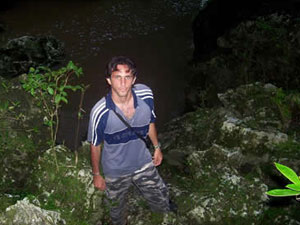
Sometimes I suspect that blogging in Cuba is like a scream from the depths of a cave that is lost in the void without finding any listeners. The echo comes back to me in an irascible silence, making me uncomfortable, thinking that outside the cave there are no inhabitants, we are alone.
The scream simply fades in the air. And we continue to roar in vain. We only manage to exorcise the impotence of knowing ourselves helpless and insignificant. The danger of posting is a personal matter, although to do so signifies, in some way, restoring the Nation to millions.
Death in Cuba is like a card game where the loser is well aware that given the rules and the ethics he must accept the facts and leave satisfied. And history doesn’t contradict me, and I remember some of the most significant tragedies:
A tugboat with several families, including children, one in arms, women, the elderly, is assaulted by another shuttle and with water hoses they are swept from the deck and thrown overboard to their death by suffocation. And the official press pays little regard to the incident.
They shoot some teenagers for the crime of attempting to cross the Straits of Florida, after ticking them and guaranteeing them life, without the blood splatter.
A man dies of hunger in a dark and dirty cell without the guilty missing a minute of sleep. Only his name remains in the anniversaries: Orlando Zapata.
Recently they expelled from the National Assembly, and closed the workshop of the artist Pedro Pablo Oliva, because he publicly expressed his personal ideas of democracy, and called for a multiparty system.
In recent days, they beat an opponent in the most central park of the city of Santa Clara, and hours later he died from the aftermath of the blows. The news becomes know through the willingness and courage of many who run at risk for others, and in just a few days, the news is diluted like a flash on the horizon.
A few hours ago, the Superior Art Institute (ISA), revoked the registration and grades of the student Henry Constantin, because he reported in his blog the news of the dissident murdered in Santa Clara. The young artist decided “not to leave the school on his own two feet.” The government understood it as a direct confrontation at his design, and nothing more dangerous could happen.
There are several possible sequences of what could happen:
1 – They could assault the student, threaten him, the State Security officials could abuse him and forcibly remove him from campus.
2 – They could manipulate a group of students disposed to “defy” Henry’s position, and in the end the young, emboldened by official pressure, will want to punish and beat him.
3 – In any of these variants a fatal accident could happen: a fall down the stairs, a slip in the struggle and he could receive a serious blow.
I know I’m being tragic but after reading the beginning of this post is there room for any possibility of naiveté or optimism? Does he have to endure another abusive attack before it happens? Why more lives to remember? What will we conquer by allowing them to add more pain to that we already possess?
The silence of those who raise their eyebrows on reading the horror and then turn the page, is direct complicity with the Castro dictatorship.
May 27 2011

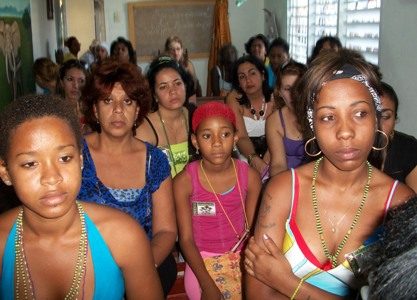
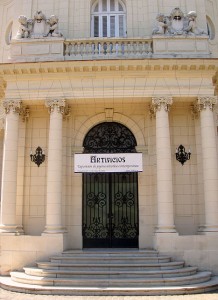 According Dannys Montes de Oca Moreda, curator of Whirlwind II, exhibited from 9 May to 9 June in Havana Gallery, “it is in order that that object that hasn’t told a story before,” a maxim contradicted by the young artists who presented The Whirlwind in the capital last fall, a continuation of the show in the Antonio M. Claret Cultural Center in Santiago de Cuba, where the logic promotional showed an emerging group that looks at nature and reality from the expressions of art.
According Dannys Montes de Oca Moreda, curator of Whirlwind II, exhibited from 9 May to 9 June in Havana Gallery, “it is in order that that object that hasn’t told a story before,” a maxim contradicted by the young artists who presented The Whirlwind in the capital last fall, a continuation of the show in the Antonio M. Claret Cultural Center in Santiago de Cuba, where the logic promotional showed an emerging group that looks at nature and reality from the expressions of art.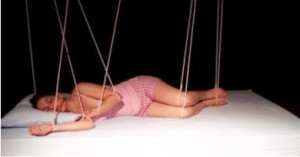 Philosophical concerns and aesthetic pleasure are found in the offerings of Carlos Caballero, creator of the paintings On the Other Side of the Meadow, and Untitled (Ray); Alejandro Campins, author of The Son, Keep Out and Suo Chang Mountain (oil-canvas from 2010 and 2011); Michel Perez Pollo, whose paradoxical and animist look in The Shore of the Beach and Model for the Shore of the Beach. While Reyes Adislen offers scenes of childhood as a boundary between the naive and the twisted, given in the series League, made with acrylic, tempera and collage on cardboard.
Philosophical concerns and aesthetic pleasure are found in the offerings of Carlos Caballero, creator of the paintings On the Other Side of the Meadow, and Untitled (Ray); Alejandro Campins, author of The Son, Keep Out and Suo Chang Mountain (oil-canvas from 2010 and 2011); Michel Perez Pollo, whose paradoxical and animist look in The Shore of the Beach and Model for the Shore of the Beach. While Reyes Adislen offers scenes of childhood as a boundary between the naive and the twisted, given in the series League, made with acrylic, tempera and collage on cardboard.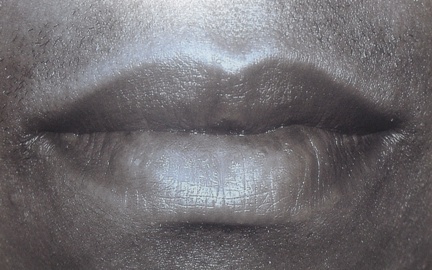 Racial discrimination in Cuba goes back to the slavery system introduced by Spanish colonialism. Given the demand for sugar in world trade, the Creole oligarchy freely engaged in the slave trade and the massive importation of slaves from Africa, a trade in human beings that took off with the British occupation of Havana, to the point that by the mid-nineteenth century the proportion of blacks exceeded that of whites on the island. From the economic, social and cultural relations between slaves and slave owners, or between blacks and whites, sprouted the roots of racial discrimination that continue today.
Racial discrimination in Cuba goes back to the slavery system introduced by Spanish colonialism. Given the demand for sugar in world trade, the Creole oligarchy freely engaged in the slave trade and the massive importation of slaves from Africa, a trade in human beings that took off with the British occupation of Havana, to the point that by the mid-nineteenth century the proportion of blacks exceeded that of whites on the island. From the economic, social and cultural relations between slaves and slave owners, or between blacks and whites, sprouted the roots of racial discrimination that continue today.